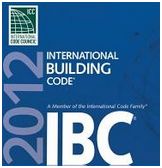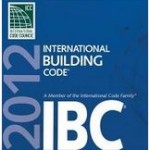This article’s content was published by the following source: Retrofit Magazine – March 17, 2016
Unless otherwise noted, the content below has not been altered by Hansen Pole Buildings
We’ve come a long way since the first recorded building code was passed in 1772 B.C. Things were a lot simpler then and the penalties were very straightforward: “If a builder build a house for someone … and the house which he built fall in and kill its owner, then that builder shall be put to death.”
 Fast-forward more than 3,000 years to 1666 when the Great Fire of London destroyed almost 80 percent of the timber buildings in the crowded city. Determined to prevent any repeat of this calamity, the London city fathers set an important precedent for building codes, mandating that all new buildings would have some “capacity to resist burning”. By the early part of the 20th century, U.S. cities were adopting codes to protect the “safety, health and general welfare” of the people who lived in the increasingly crowded urban areas. Building codes have the same general focus on safety and health today but have been expanded to cover the enormous variety of modern developments that could impact us. That complexity extends beyond the codes themselves to all of the requirements that impact the construction community today: standards, regulatory requirements, specifications and recommended practices, for example. What’s the difference, who establishes them, and who enforces them? Ask 10 people in the construction industry and you might get 10 different answers.
Fast-forward more than 3,000 years to 1666 when the Great Fire of London destroyed almost 80 percent of the timber buildings in the crowded city. Determined to prevent any repeat of this calamity, the London city fathers set an important precedent for building codes, mandating that all new buildings would have some “capacity to resist burning”. By the early part of the 20th century, U.S. cities were adopting codes to protect the “safety, health and general welfare” of the people who lived in the increasingly crowded urban areas. Building codes have the same general focus on safety and health today but have been expanded to cover the enormous variety of modern developments that could impact us. That complexity extends beyond the codes themselves to all of the requirements that impact the construction community today: standards, regulatory requirements, specifications and recommended practices, for example. What’s the difference, who establishes them, and who enforces them? Ask 10 people in the construction industry and you might get 10 different answers.
Generally, codes and standards are the most important and specific frameworks that builders follow. Codes provide a set of rules that specify the minimum acceptable level of safety for “manufactured, fabricated or constructed” objects. They frequently have been enacted into law on the state and local level and noncompliance can result in legal action. Repeat: noncompliance can result in legal action. Standards, on the other hand, establish engineering or technical requirements for products, practices, methods or operations. They literally provide the nuts and bolts of meeting code requirements. If the codes tell you what you have to do, then the standards tell you how to do it.
It’s important to note that codes, in most circumstances, are not issued from behind closed doors by people unfamiliar with the requirements of the construction business. Many legally enforced codes are based on existing standards—especially “voluntary consensus standards”. These standards are drawn up by influential domestic or international organizations through a consensus-based process, designed to be open and balanced.
For instance, in the U.S., one of the most familiar “voluntary consensus standards” is ASHRAE Standard 90.1, which sets minimum requirements for energy-efficient designs for buildings (except for low-rise residential buildings). Given its importance, 90.1 is one of the standards that ASHRAE has designated for “continuous maintenance”, allowing it to be updated on an ongoing basis, reflecting new technology and new understandings of the various forces that impact the performance of a building.
Earlier this month, the subcommittees related to 90.1 (Envelope, Mechanical, Lighting, Format & Compliance) presented their work plans for the next three years, leading up to the deadline for publication for the updated ASHRAE 90.1 version in 2019. These meetings are open to members of the public as interested observers and many staff/people/manufacturers in the construction community are regular attendees and contributors. These work plans are discussed within the subcommittee and reviewed by the full committee and will guide the committee’s work for the next few years. Eventually, some of the content of these work plans being discussed today will make their way into the building codes of your local municipality in the next few years.
Developing consensus-based standards and codes: it’s all part of laying the foundation for a construction and building industry that delivers safe shelter and solid value.









